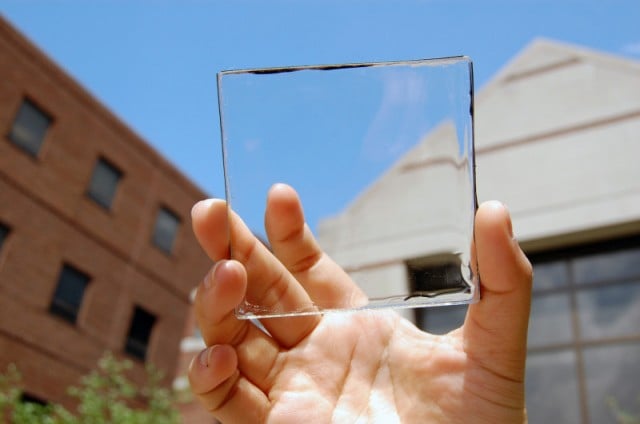
Imagine a world where we could generate electricity using the surface of our windows, smartphones, our car’s roofs or the glass roofs of our office building. What sounds like a far-away dream, is on its way to become reality thanks to transparent solar panels.
Conventional solar panels, more specifically solar photovoltaic panels, absorb sunlight and convert photons (particles of sunlight) into usable energy. The difficulty with making transparent solar panels is that the sunlight passes through the transparent material. This means that the process that generates the electricity in the solar cell cannot be started because no light is absorbed. To handle this problem, scientists from Michigan State University used organic salts that absorb specific invisible wavelengths of light, such as ultraviolet light. This light is then transformed and the material of the panel moves it to its edges, where stripes of photovoltaic solar cells convert it into electricity (Greenmatch, 2018).
Up to now, after more than 5 year researching on transparent solar panels, scientists estimated that harnessing power by see – through materials only reaches 1% efficiency compared to 15% of normal solar panels. But in terms of overall electricity potential, the authors of the research note that there is an estimated 5 billion to 7 billion square meters of glass surface in the United States. And with that much glass to cover, transparent solar technologies have the potential of supplying some 40 percent of energy demand in the U.S. – about the same potential as rooftop solar units (Michigan State University, 2017). It means that the deployment of both technologies could get us close to 100 percent of energy demand. More interestingly, this is true not only for the case of the USA but also for any other countries in the world, including Vietnam.
With the fast speed of technology development, we have a strong ground to believe that transparent solar panel will become the hot trend in the near future.
Reference:
Andy Henion, Richard Lunt (2017). Michigan State University.
Greenmatch (2018).
